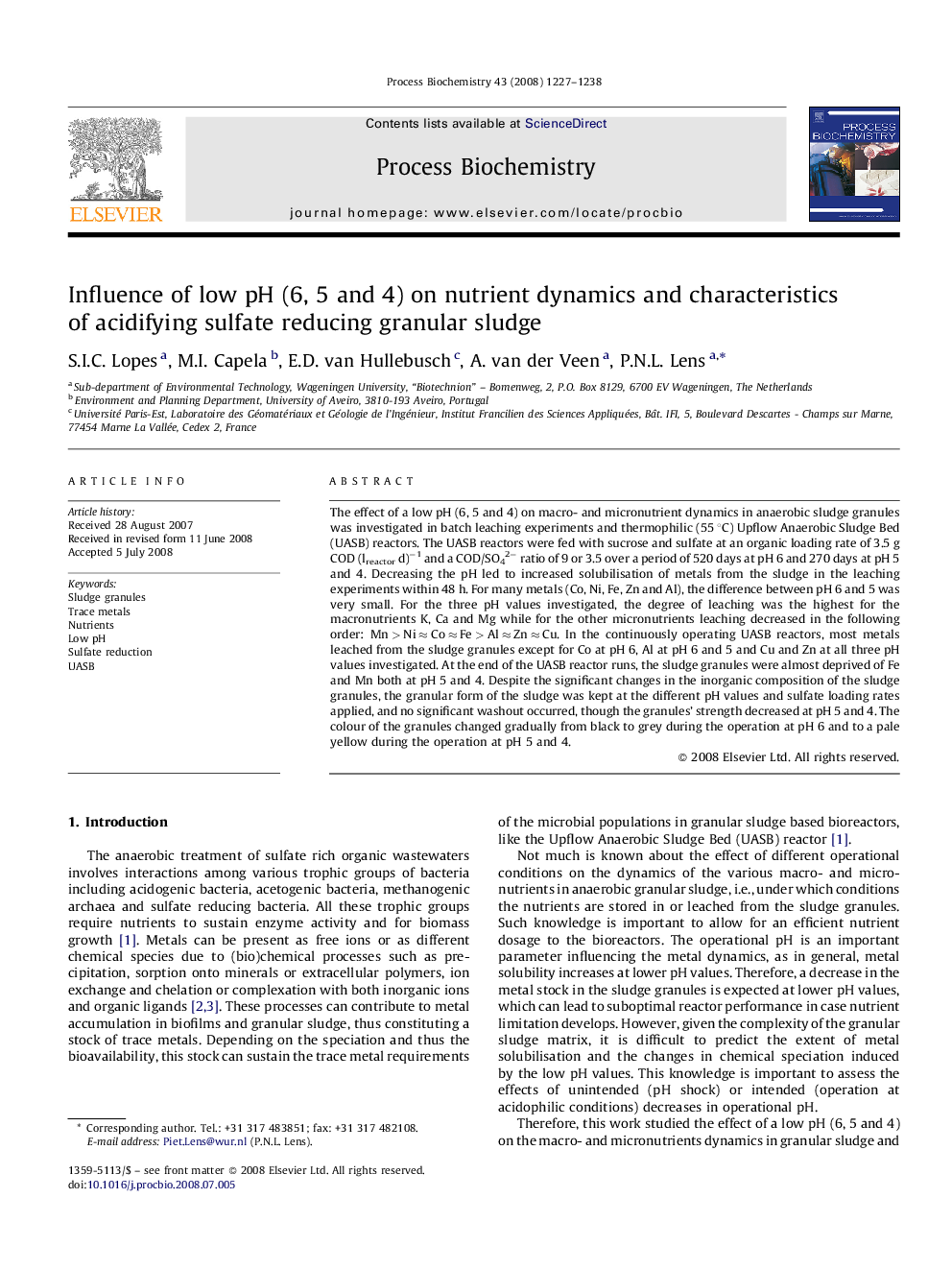| Article ID | Journal | Published Year | Pages | File Type |
|---|---|---|---|---|
| 35313 | Process Biochemistry | 2008 | 12 Pages |
The effect of a low pH (6, 5 and 4) on macro- and micronutrient dynamics in anaerobic sludge granules was investigated in batch leaching experiments and thermophilic (55 °C) Upflow Anaerobic Sludge Bed (UASB) reactors. The UASB reactors were fed with sucrose and sulfate at an organic loading rate of 3.5 g COD (lreactor d)−1 and a COD/SO42− ratio of 9 or 3.5 over a period of 520 days at pH 6 and 270 days at pH 5 and 4. Decreasing the pH led to increased solubilisation of metals from the sludge in the leaching experiments within 48 h. For many metals (Co, Ni, Fe, Zn and Al), the difference between pH 6 and 5 was very small. For the three pH values investigated, the degree of leaching was the highest for the macronutrients K, Ca and Mg while for the other micronutrients leaching decreased in the following order: Mn > Ni ≈ Co ≈ Fe > Al ≈ Zn ≈ Cu. In the continuously operating UASB reactors, most metals leached from the sludge granules except for Co at pH 6, Al at pH 6 and 5 and Cu and Zn at all three pH values investigated. At the end of the UASB reactor runs, the sludge granules were almost deprived of Fe and Mn both at pH 5 and 4. Despite the significant changes in the inorganic composition of the sludge granules, the granular form of the sludge was kept at the different pH values and sulfate loading rates applied, and no significant washout occurred, though the granules’ strength decreased at pH 5 and 4. The colour of the granules changed gradually from black to grey during the operation at pH 6 and to a pale yellow during the operation at pH 5 and 4.
